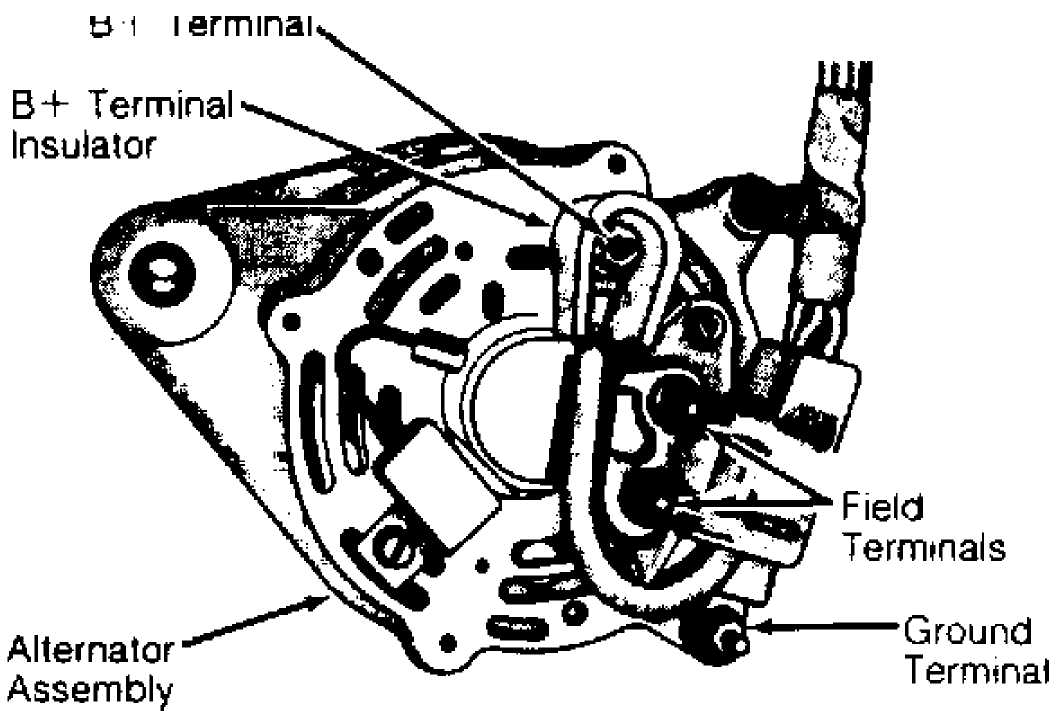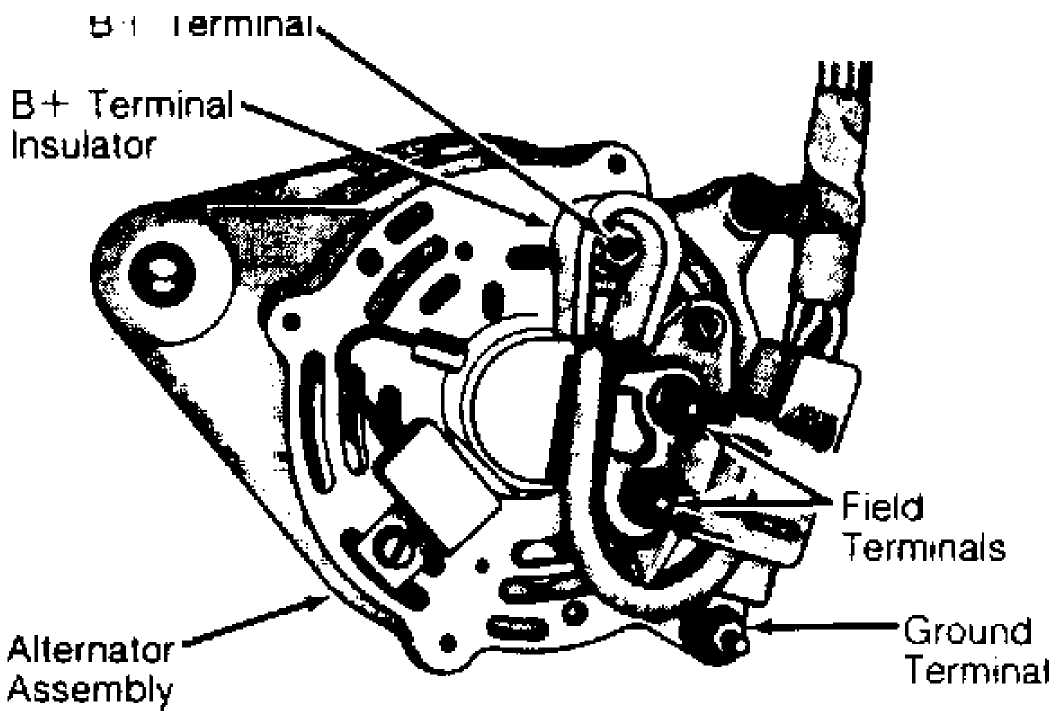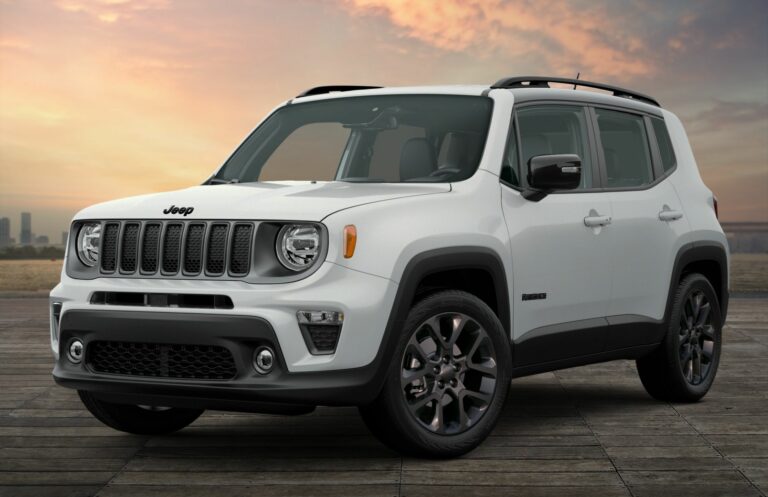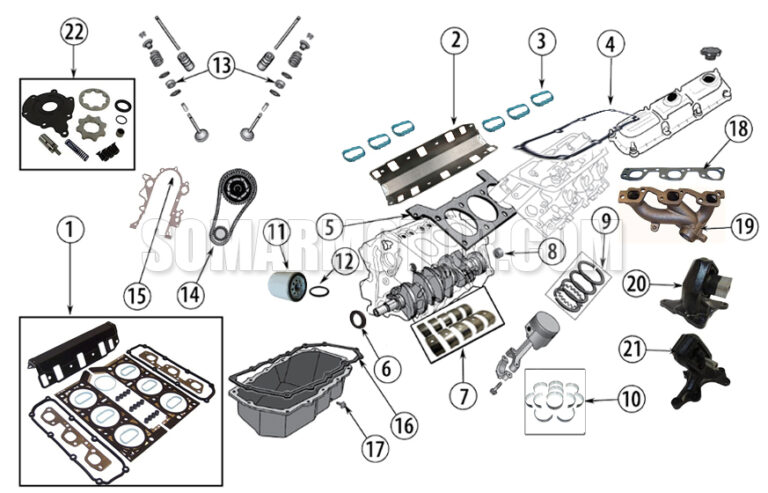Jeep Cherokee Alternator: The Unsung Hero of Your Adventure Machine
Jeep Cherokee Alternator: The Unsung Hero of Your Adventure Machine jeeps.truckstrend.com
The Jeep Cherokee. A name synonymous with rugged capability, off-road prowess, and a spirit of adventure. Whether you’re navigating city streets or conquering challenging trails, your Cherokee relies on a complex network of components working in harmony. Among the most critical, yet often overlooked, is the Jeep Cherokee Alternator. Far more than just a simple part, the alternator is the heart of your vehicle’s electrical system, diligently generating power to keep everything running smoothly. Without it, your battery would quickly drain, leaving you stranded and your adventures on hold. Understanding its function, recognizing signs of failure, and knowing how to maintain it are crucial for every Jeep Cherokee owner, ensuring reliable performance mile after mile.
This comprehensive guide will delve deep into the world of the Jeep Cherokee Alternator, exploring its vital role, common issues, diagnostic methods, replacement procedures, and essential maintenance tips to keep your beloved SUV powering on.
Jeep Cherokee Alternator: The Unsung Hero of Your Adventure Machine
How Your Jeep Cherokee Alternator Works: A Constant Current of Power
At its core, an alternator is an electromechanical device that converts mechanical energy from the engine into electrical energy. In your Jeep Cherokee, the alternator is typically belt-driven by the engine’s serpentine belt. As the engine runs, the belt spins the alternator’s pulley, which in turn rotates a rotor inside the alternator.
This spinning rotor, containing a magnetic field, induces an alternating current (AC) in stationary copper windings (the stator) surrounding it. Since your Cherokee’s electrical system operates on direct current (DC), the alternator incorporates a crucial component called the rectifier. The rectifier, usually a set of diodes, converts the AC power into usable DC power.
Finally, a voltage regulator monitors the electrical system’s voltage and adjusts the alternator’s output to maintain a steady 13.5 to 14.7 volts (approximately), regardless of engine RPM or electrical load. This ensures your battery is constantly recharged and all your vehicle’s electrical components – from the headlights and radio to the fuel injectors and ignition system – receive a consistent and stable power supply. Without this continuous power generation, your battery would quickly deplete, unable to power the vehicle beyond its initial charge.
Symptoms of a Failing Jeep Cherokee Alternator: Don’t Get Stranded
Recognizing the early warning signs of an alternator problem can save you from inconvenient breakdowns and potentially costly repairs. Here are the most common symptoms to watch out for:

- Battery Warning Light: This is often the most obvious indicator. If the battery light (often shaped like a battery) illuminates on your dashboard, it usually signifies a problem with the charging system, which points directly to the alternator.
- Dim or Flickering Lights: As the alternator struggles to produce sufficient power, electrical components, especially headlights, interior lights, and dashboard lights, may appear dim, flicker, or fluctuate in intensity.
- Dead Battery: While a dead battery can be caused by many things, if your battery repeatedly dies even after being charged, and there’s no obvious parasitic drain, a failing alternator is a prime suspect. It’s simply not recharging the battery as you drive.
- Strange Noises: A failing alternator can produce grinding, whining, or squealing noises. This might be due to worn bearings within the alternator or a loose/worn serpentine belt.
- Electrical Component Malfunctions: Power windows operating slowly, the radio cutting out, the air conditioning blowing weakly, or the power steering feeling heavy (in electrically assisted systems) can all be signs of insufficient voltage from a dying alternator.
- Burning Rubber or Electrical Smell: An overworked or failing alternator can generate excessive heat, leading to the smell of burning rubber (from a slipping belt) or burning electrical insulation.
- Difficulty Starting or Stalling: If the battery isn’t getting charged, it won’t have enough power to crank the engine. If the alternator fails completely while driving, the vehicle may stall as essential systems lose power.


Diagnosing Alternator Issues: Pinpointing the Problem
Before rushing to replace your alternator, it’s crucial to properly diagnose the issue. Sometimes, what seems like an alternator problem might actually be a bad battery or a loose connection.
-
Visual Inspection:
- Check the serpentine belt for cracks, fraying, or excessive looseness.
- Inspect all wiring connections to the alternator for corrosion or looseness.
- Look for any signs of fluid leaks around the alternator.
-
Battery Voltage Test (Engine Off):
- Using a multimeter, measure the voltage across your battery terminals with the engine off. A healthy, fully charged battery should read around 12.6 to 12.8 volts. If it’s significantly lower, charge the battery first.
-
Charging Voltage Test (Engine Running):
- Start your Jeep Cherokee.
- With the engine running (ideally around 1500-2000 RPM) and all accessories off, measure the voltage across the battery terminals again.
- A healthy charging system should show a reading between 13.5 and 14.7 volts. If the reading is below 13.0V or above 15.0V, your alternator (or voltage regulator, which is often integrated) is likely faulty.
- Repeat the test with high electrical loads (headlights on, AC full blast, radio on). The voltage should remain within the healthy range. A significant drop indicates an alternator struggling under load.
-
Professional Diagnostic Scan:
- Modern Jeep Cherokees have complex electrical systems. A professional mechanic can use an OBD-II scanner to check for diagnostic trouble codes (DTCs) related to the charging system, which can provide more specific insights. They also have specialized load testers that can accurately assess the alternator’s output.
Important Note: Always ensure your battery is fully charged and in good condition before testing the alternator. A bad battery can mimic alternator symptoms.
Types of Alternators for Your Jeep Cherokee: Choosing the Right Power
When it comes to replacing your Jeep Cherokee alternator, you’ll encounter a few options:
- OEM (Original Equipment Manufacturer) Alternators: These are identical to the alternator that came with your Cherokee from the factory. They are known for their quality, perfect fit, and reliability, but they are typically the most expensive option.
- Aftermarket New Alternators: Produced by various manufacturers (e.g., Bosch, Denso, ACDelco, Remy), these are brand new units designed to meet or exceed OEM specifications. They offer a good balance of quality and price.
- Remanufactured Alternators: These are used alternators that have been disassembled, inspected, worn components replaced (bearings, brushes, rectifier, voltage regulator), and then reassembled and tested. They are the most budget-friendly option and often come with a warranty, but quality can vary between rebuilders. Choose reputable brands.
- High-Output Alternators: If you’ve added significant electrical accessories to your Cherokee (e.g., powerful sound system, winches, auxiliary lights, multiple chargers), a standard alternator might not provide enough power. High-output alternators are designed to deliver more amperage (e.g., 200A, 250A, or more) to support these increased demands. While beneficial for heavily accessorized Jeeps, they are generally more expensive and not necessary for a stock vehicle.
Always ensure the replacement alternator matches the amperage rating of your original unit, unless you specifically need a high-output version.
Replacing a Jeep Cherokee Alternator: DIY vs. Professional
Replacing an alternator on a Jeep Cherokee can range from moderately challenging to relatively straightforward, depending on the specific model year and engine configuration.
DIY Replacement Guide (General Steps – Always consult a service manual for your specific model):
Tools You’ll Likely Need:
- Socket set (metric and/or standard)
- Wrenches
- Serpentine belt tensioner tool (or appropriate wrench)
- Flathead screwdriver
- Battery terminal cleaner
- Gloves and safety glasses
Safety First:
- Disconnect the Battery: Always disconnect the negative (-) battery terminal first, then the positive (+). This prevents accidental short circuits.
- Allow Engine to Cool: If the engine has been running, allow it to cool down completely before working.
- Secure the Vehicle: If lifting the vehicle, ensure it’s on sturdy jack stands.
Steps:
- Locate the Alternator: It’s usually mounted on the front or side of the engine, often near the top.
- Remove the Serpentine Belt: Identify the tensioner pulley. Use the serpentine belt tool (or a wrench) to relieve tension on the belt and slip it off the alternator pulley. Take note of the belt’s routing diagram before removal.
- Disconnect Electrical Connections: Carefully disconnect the main power cable (usually a thick cable with a nut) and any smaller wiring harnesses or plugs from the back of the alternator. Be gentle with plastic clips.
- Unbolt the Alternator: Remove the mounting bolts that secure the alternator to the engine bracket. There are usually two or three.
- Remove the Old Alternator: Once unbolted, carefully maneuver the old alternator out of its position. It can be heavy and awkward.
- Install the New Alternator: Position the new alternator into place and loosely start the mounting bolts.
- Reconnect Electrical Connections: Reconnect the main power cable and any wiring harnesses. Ensure connections are clean and tight.
- Reinstall the Serpentine Belt: Route the serpentine belt correctly around all pulleys, then use the tensioner tool to create slack and slip the belt back onto the alternator pulley. Double-check that the belt is seated properly on all grooves.
- Reconnect the Battery: Reconnect the positive (+) battery terminal first, then the negative (-).
- Test the System: Start your Jeep. The battery light should turn off. Check the charging voltage with a multimeter as described in the "Diagnosing" section.
When to Call a Professional:
- Lack of Tools or Experience: If you don’t have the necessary tools or feel uncomfortable working on your vehicle’s electrical system.
- Difficult Access: Some Cherokee models have alternators in very tight spots, requiring removal of other components (e.g., power steering pump, intake manifold) for access.
- Undiagnosed Issues: If you’re unsure if the alternator is truly the problem, a professional can accurately diagnose it.
- Warranty Concerns: New alternators often come with a warranty that might be voided by improper DIY installation.
Maintenance Tips for Your Jeep Cherokee Alternator: Extend its Lifespan
While alternators are robust components, a little preventative maintenance can significantly extend their lifespan and ensure reliable operation:
- Regular Battery Checks: A weak or failing battery forces the alternator to work harder, shortening its life. Regularly test your battery and replace it when it shows signs of weakness.
- Inspect Serpentine Belt: Periodically check the serpentine belt for cracks, fraying, or excessive wear. Ensure it has proper tension. A loose or worn belt can cause the alternator to slip, reducing its output.
- Keep Connections Clean and Tight: Ensure all electrical connections to the alternator and battery are clean, corrosion-free, and securely tightened. Loose or corroded connections create resistance and can hinder proper charging.
- Avoid Excessive Electrical Load: While driving, try not to run all high-demand accessories (headlights, high-beam, AC, defroster, powerful stereo) simultaneously for extended periods, especially at low RPMs. This puts extra strain on the alternator.
- Address Warning Signs Promptly: Don’t ignore the battery warning light or dimming lights. Addressing these symptoms early can prevent complete alternator failure and potential damage to other electrical components.
Common Challenges & Solutions with Jeep Cherokee Alternators
Even with good maintenance, some issues can arise:
- Corrosion on Terminals: Solution: Disconnect battery (negative first!), use a wire brush and battery terminal cleaner to remove corrosion. Apply anti-corrosion grease.
- Belt Squeal: Solution: Check belt tension. If tension is correct, the belt may be old/worn and require replacement, or a pulley might be misaligned/worn.
- Overcharging/Undercharging: Solution: This points directly to a faulty voltage regulator (usually integrated into the alternator) or a wiring issue. Replacement of the alternator is often the solution.
- Difficulty Accessing Bolts: Solution: Consult your specific Cherokee’s service manual. Sometimes, specialized tools or temporary removal of adjacent components is necessary. Patience is key.
- Post-Installation Battery Light Still On: Solution: Re-check all electrical connections to the alternator and battery. Ensure the serpentine belt is properly seated and tensioned. Sometimes, a full battery charge is needed after replacement. If the light persists, re-diagnose.
Jeep Cherokee Alternator Price Table (Estimates)
Please note that prices can vary significantly based on your specific Jeep Cherokee model year, engine type, brand, retailer, and whether you choose new, remanufactured, or high-output. Installation costs (if done professionally) are additional and can range from $100-$400 depending on labor rates and complexity.
| Alternator Type / Brand Example | Amperage (Common Range) | Estimated Price Range (USD) | Notes |
|---|---|---|---|
| Remanufactured | 120A – 160A | $100 – $250 | Budget-friendly, often requires core return, quality varies by rebuilder. |
| Aftermarket (New) | 120A – 160A | $150 – $400 | Good balance of price and quality, widely available (e.g., Bosch, Denso, ACDelco). |
| OEM (Mopar) | 120A – 160A | $300 – $600+ | Exact fit, highest quality, typically most expensive. |
| High-Output Aftermarket | 200A – 250A+ | $250 – $700+ | For vehicles with significant electrical accessories. |
(Prices are approximate and subject to change. Always verify pricing with your chosen retailer.)
Frequently Asked Questions (FAQ) About Your Jeep Cherokee Alternator
Q1: How long does a Jeep Cherokee alternator typically last?
A1: On average, a Jeep Cherokee alternator can last anywhere from 80,000 to 150,000 miles, or 5 to 10 years. However, this can vary greatly depending on driving conditions, electrical load, climate, and maintenance.
Q2: Can I drive my Jeep Cherokee with a bad alternator?
A2: You can, but only for a very short distance. Your vehicle will run solely on battery power. Once the battery drains, the engine will stop, and you’ll be stranded. It’s highly advisable to address an alternator issue immediately.
Q3: Is it hard to replace a Jeep Cherokee alternator myself?
A3: It depends on your mechanical skill level and the specific Cherokee model. Some are relatively straightforward with basic tools, while others might be in cramped locations, requiring more effort and potentially specialized tools. Always consult a repair manual for your specific year and model.
Q4: How can I tell if it’s the battery or the alternator that’s bad?
A4: The best way is to perform the voltage tests mentioned in the "Diagnosing" section. A fully charged battery should read 12.6-12.8V (engine off). With the engine running, the charging voltage should be 13.5-14.7V. If the engine-off voltage is low but the charging voltage is healthy, it’s likely a battery issue. If the engine-off voltage is good but the charging voltage is low or absent, it’s an alternator issue.
Q5: Why would I need a high-output alternator for my Jeep Cherokee?
A5: A high-output alternator is beneficial if you’ve added many power-hungry accessories like a winch, powerful off-road lighting, a large aftermarket sound system, or other auxiliary electronics that draw more power than the factory alternator can reliably provide.
Q6: What causes an alternator to fail?
A6: Common causes include worn-out internal components (brushes, bearings, diodes, voltage regulator), exposure to excessive heat or moisture, overcharging/undercharging (due to regulator failure), or a loose/worn serpentine belt causing slippage.
Conclusion: Powering Your Jeep Cherokee Adventures
The Jeep Cherokee alternator, though often out of sight, is undeniably a cornerstone of your vehicle’s reliability. From ensuring your engine starts crisply every time to powering every electronic comfort and safety feature, its constant operation is essential for your adventures. By understanding its function, being vigilant for warning signs, performing basic diagnostics, and committing to proactive maintenance, you empower yourself to keep your Cherokee running strong. Whether you choose to tackle a replacement yourself or rely on a trusted professional, prioritizing the health of your charging system will ensure your Jeep remains a dependable companion on every road and trail, ready for whatever journey lies ahead.







